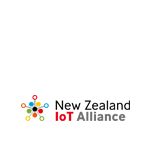Since our last newsletter, New Zealand has moved from Level 2 lockdown restrictions back to a new normal of Level 1. We say a ‘new normal’ as many of our members are still working fully or partly from home.
Part of this new normal includes wondering how the post COVID-19 world will look and the likely impact of the IoT on the future. For instance, will we see faster progression to the deployment of more IoT connected gas and water meters so that real time data appears on a customer-facing app rather than sending contractors out to manually read meters? Will businesses cut lease costs and downsize office space, resulting in more employees than office desks and parking spaces? Will this downsizing drive a need for remote tracking of office desk and parking space occupancy?
Operations Director at Thinxtra and IoT Alliance Founding Board Member, Shaun McBride explores these questions in more detail, in an article available on the IoT Alliance website. Many of the articles in this month’s newsletter explore how IoT will change the workplace, post COVID-19.
It has been encouraging to see funding from the NZ Government’s COVID-19 Innovation Acceleration Fund, which aims to accelerate the operational deployment of innovative solutions to support responses to COVID-19, directed to development of IoT-based solutions. This includes $461,000 to the University of Auckland for an innovative remote body temperature monitoring solution to reduce the spread of COVID-19 and Sagen Software using geofencing technology and analytics to manage COVID-19 on construction sites.
Last month the IoT Alliance Executive, along with NZTech, launched a member survey to better understand the impact of COVID-19 on our members and what the industry is facing now and into the future.
Several hundred members responded, and the results show a decline in operations across the board. While some tech firms experienced initial work increases, in general, most are negatively impacted. 68 per cent of surveyed companies lost customers, 46 per cent lost funding, and 15 per cent have reduced staff numbers. Detailed feedback is included in the final report, available here.
Another impact of COVID-19 is the relative scarcity of physical industry events. Most have continued running, but in an online format. One example is Fieldays, the largest agricultural event in the Southern Hemisphere, which is running fully online in 2020.
The Facilities Integrate team are still hosting a physical event at the ASB Showgrounds on 12-13 August 2020. IoT is having a significant impact on facilities management and will be a strong theme at this year’s event.
Finally, the Smart Cities Council Australia and New Zealand (SCCANZ) has launched the Smart Cities Week 2020 programme. This is a series of events from April to November, with Digital Twin Week, to be held from 18-23 October.
Nga mihi nui,
The team at the NZ IoT Alliance
To receive our full newsletter including additional industry updates and information, subscribe now






